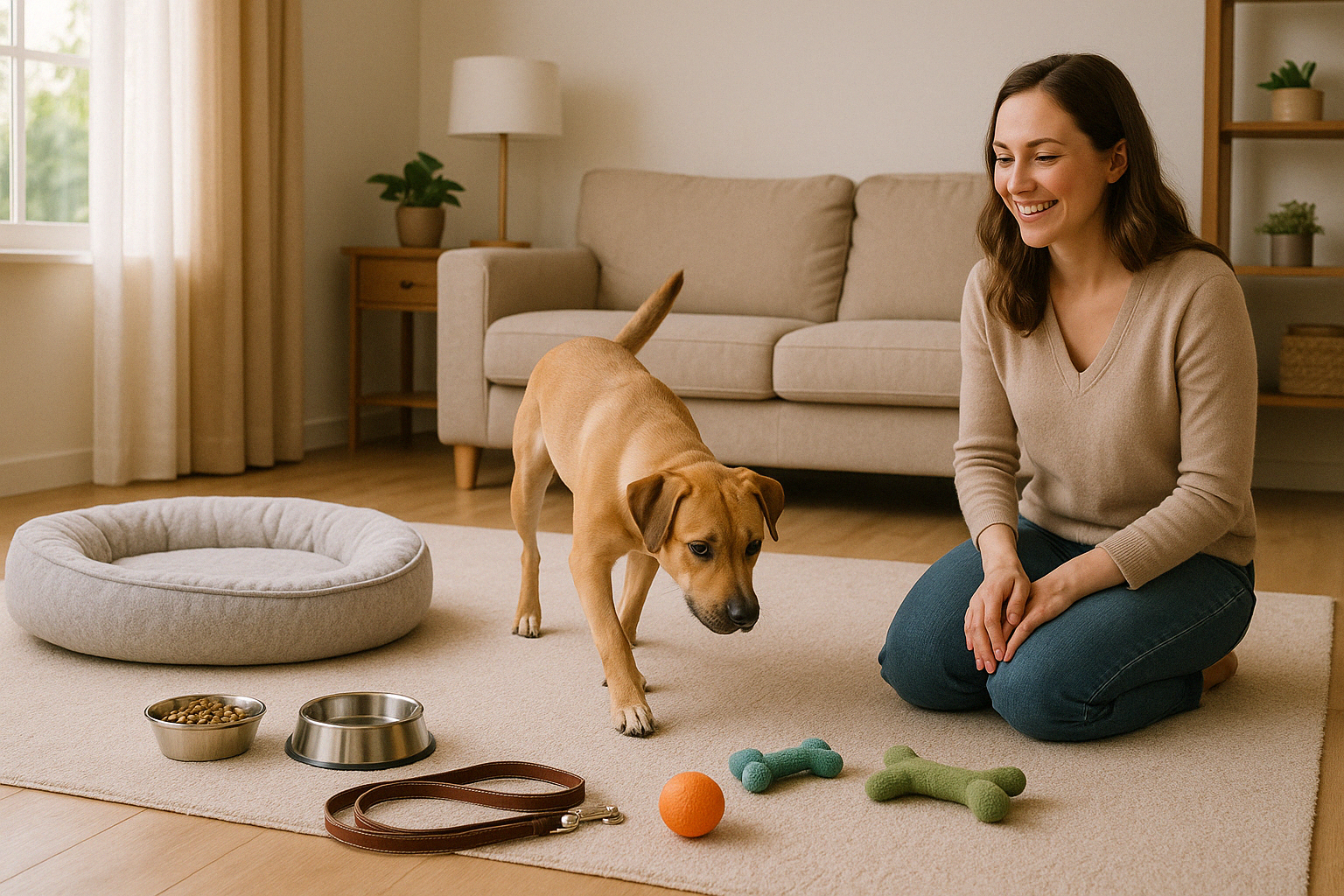Bringing a new dog into your home is an exciting and transformative experience. Whether you adopt a puppy, rescue an older companion, or welcome a retired athlete, preparation ensures a smooth transition. This checklist covers every essential—from safety and supplies to training and enrichment—so you can build a strong foundation for health, happiness, and lifelong companionship.
Preparing Your Home Environment
Dog-Proofing the Space
• Stow electrical cords and wires out of chewing range
• Lock away cleaners, medications, chocolate, and other toxins
• Secure trash cans with tight-fitting lids or bungee cords
• Block stairs or unsafe areas with baby gates
• Remove plants that are toxic to dogs (e.g., lilies, azaleas, philodendrons)
Creating a Safe Sanctuary
• Designate a crate, gated room, or playpen as a calming retreat
• Furnish with a soft bed or blanket and a favorite toy
• Introduce the confinement area using treats and praise—never as punishment
Emergency Contacts at Your Fingertips
• Local veterinarian and clinic phone numbers
• 24-hour animal emergency hospital
• ASPCA Animal Poison Control: 1-888-426-4435
Essential Supplies
Feeding and Hydration
• Stainless steel or ceramic food and water bowls
• High-quality dog food (consult your vet for brand and formula)
• Slow-feeder bowl or puzzle feeder for fast eaters
• Elevated feeder for large breeds or dogs with neck issues
• Fresh water available at all times
Restraint and Identification
• 4- to 6-foot leash plus harness or flat collar
• ID tag with your name and phone number
• Microchip registration with current contact information
• City license tag, if required
Comfort and Enrichment
• Crate or kennel sized for your dog’s adult measurements
• Washable dog bed or blanket
• Variety of chew toys, interactive puzzles, and plush toys
• Treats for training and positive reinforcement
• Pet-safe shampoo, brush, nail clippers or grinder, toothbrush, and toothpaste
Health and Safety Extras
• Pet first-aid kit stocked with gauze, adhesive tape, styptic powder, and peroxide
• Flea, tick, and heartworm preventatives
• Waste bags and a sturdy poop scoop
• Enzyme-based household cleaner for accident cleanup
• Pet insurance policy information, if applicable
Health Care and Identification
Initial Veterinary Visit
• Comprehensive physical exam and weight check
• Vaccinations based on age and risk factors
• Heartworm test, fecal exam, and parasite prevention plan
• Discussion of spay or neuter timing, if not already performed
Permanent Identification
• Ensure collar tags include your primary phone number
• Confirm microchip implantation and update registry details
• Ask your vet to scan for an existing microchip at each visit
Establishing a Routine
Feeding Schedule
• Adult dogs: Two meals daily (at consistent times)
• Puppies: Three to four meals daily, decreasing to two meals by six months
• Avoid free-feeding to regulate calorie intake and aid potty training
Potty Training
• Use a consistent verbal cue (“Go potty”) when outside
• Take your dog out first thing in the morning, after meals, play sessions, and before bedtime
• Reward each successful elimination immediately with praise and a small treat
• Supervise indoors; use a crate or playpen when you can’t watch closely
Exercise and Enrichment
• Walk adult dogs twice daily (20–60 minutes per session depending on breed)
• Puppies need shorter, more frequent potty breaks and supervised play
• Rotate between fetch, tug, and scent games for mental stimulation
• Provide puzzle feeders or KONG toys filled with peanut butter or kibble
Basic Training and Socialization
Foundational Commands
• Teach “sit,” “stay,” “come,” and “leave it” using positive reinforcement
• Limit sessions to 5–10 minutes, two to three times per day
• End on a successful, high-value reward
Socialization Opportunities
• Introduce new people, dogs, and environments gradually
• Expose your puppy to car rides, vacuum cleaners, and household noises
• Arrange one-on-one playdates or puppy classes to build confidence
Professional Support
• Consider a certified trainer or obedience class for first-time owners
• Seek a behaviorist if you notice fear aggression, extreme anxiety, or persistent barking
Grooming and Maintenance
Coat and Skin Care
• Brush short coats weekly; long coats require brushing two to three times per week
• Use a moistening, dog-safe shampoo—bathing every 4–6 weeks unless skin issues arise
• Check for ticks, fleas, and skin irritations during grooming
Nail, Dental, and Ear Care
• Trim nails every 3–4 weeks, or file with a grinder for gradual shortening
• Brush teeth daily or use dental chews to prevent tartar buildup
• Clean ears weekly with a veterinarian-approved solution to avoid infections
The First Week: What to Expect
Adjustment Period
• New dogs may pant, pace, or hide—give them space to decompress
• Feed small meals if appetite is low; water intake is essential
• Maintain a calm environment without excessive visitors or noise
Building Trust
• Spend quiet time together—gentle petting, sitting nearby, or reading aloud
• Offer consistent routines for meals, walks, and rest
• Reinforce positive behavior immediately; ignore minor mistakes and redirect
Troubleshooting and When to Seek Help
Common Challenges
• House-training setbacks—return to leash-guided potty trips every hour
• Chewing and mouthing—provide appropriate chew toys and redirect to them
• Separation anxiety—start with short departures, gradually increase duration, and use puzzle toys
Professional Resources
• Veterinarian: Rule out medical causes for behavior changes
• Trainer: Develop a customized behavior modification plan
• Behaviorist: Address complex issues such as aggression or severe fear
Final Thoughts
Welcoming a new dog into your life brings unmatched joy, responsibility, and rewards. By preparing your home, gathering essential supplies, establishing consistent routines, and investing in training and enrichment, you set the stage for a healthy, happy, and harmonious relationship. Remember, patience and positive reinforcement go a long way. Your new companion doesn’t require perfection—just your love, leadership, and presence. Enjoy the journey together.

